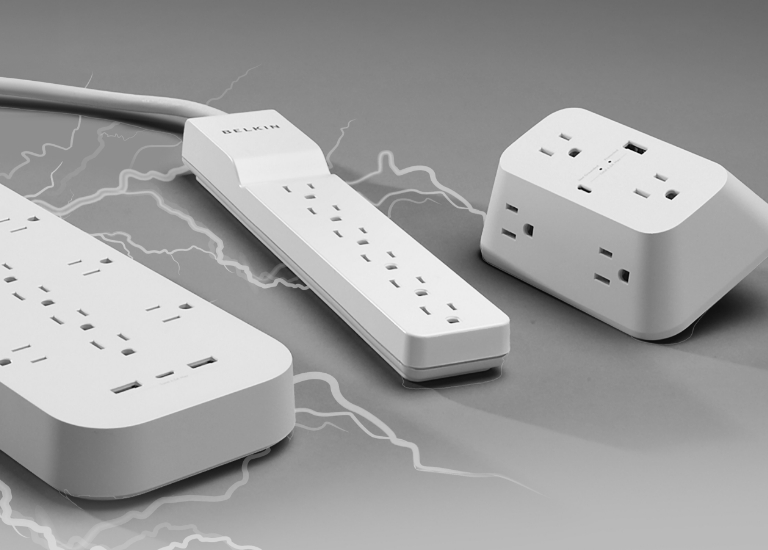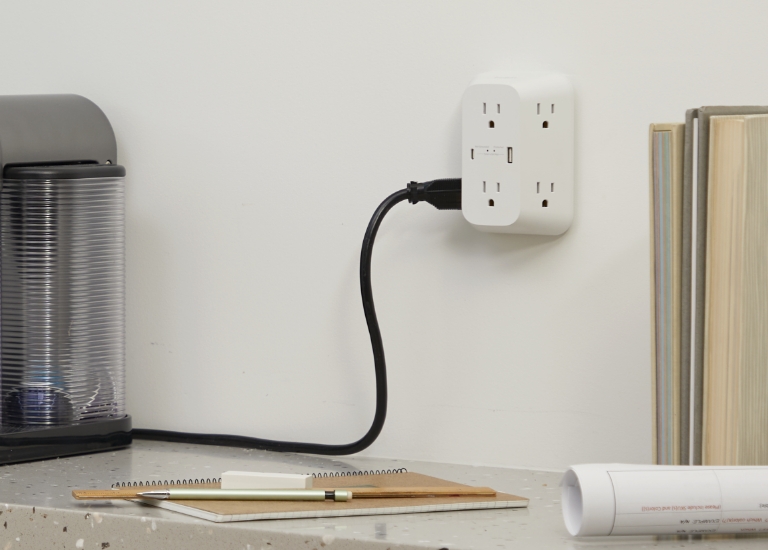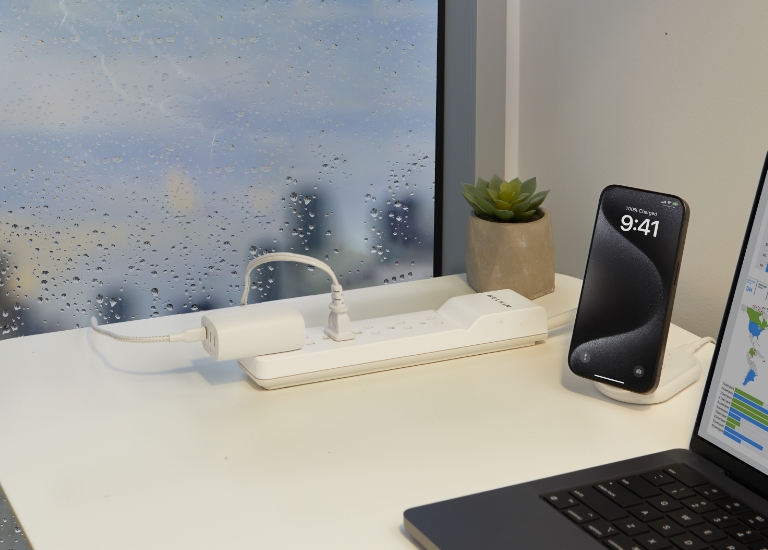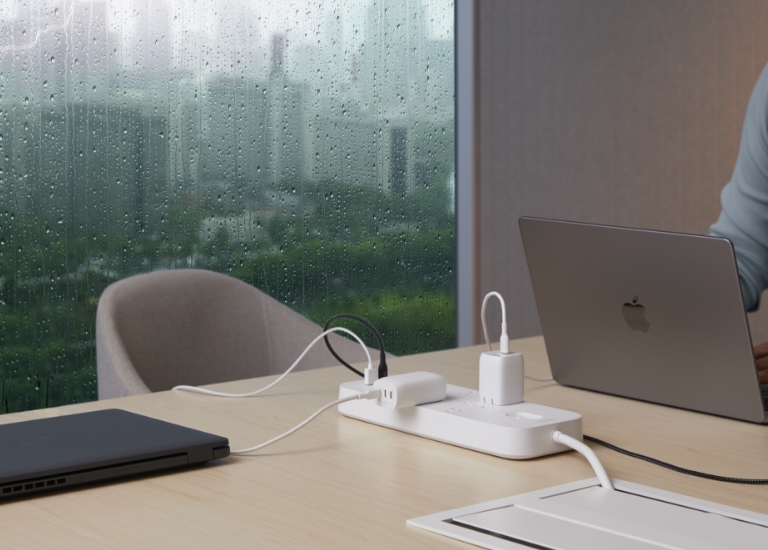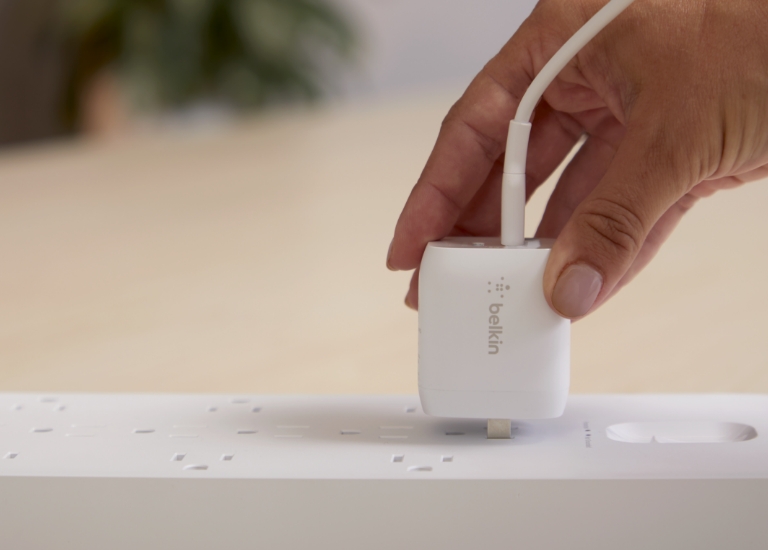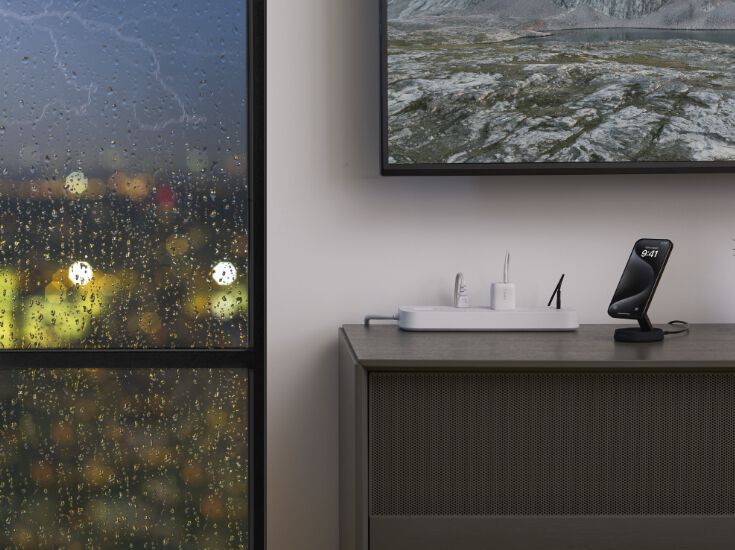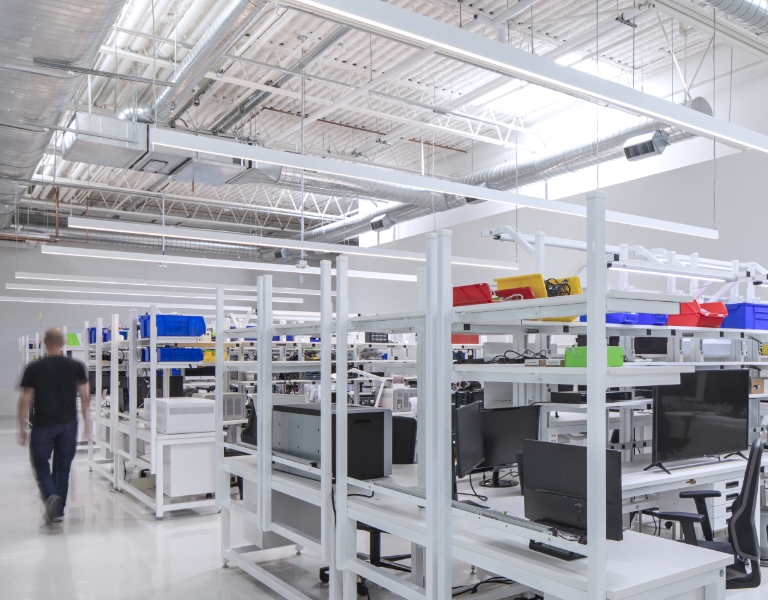Shop Surge Protectors
Overview
In inclement weather conditions, there can be a surge in lightning strikes, power spikes, and events causing outages. In the U.S., July through September are months where storms occur most frequently, but that’s a moving target extending well into October. Domestically, Michigan has the highest number of outages per capita, and other states prone to outages include Ohio, New York, Texas, and California.
To prevent damage to devices in unpredictable weather, Belkin offers premium, tested, and certified products to protect your electronics and appliances. Our surge protectors are best-in-class and portable chargers keep you connected whether you’re working in a large office, at home, or own a small business that relies on consistent power.
What is a Power Surge?
The term “power surge” refers to a spike in voltage that elevates a device’s electric flow past its designated threshold. A power surge can be categorized in one of two ways:
- Internal: an internal surge is common within households, occurring when a motorized device (e.g., an air conditioner or refrigerator) suddenly and unintentionally shuts off. This electricity is then directed to other appliances attached to the same power grid. Essentially, anything plugged into an outlet within the same place is at risk for absorbing this electricity and surging.
- External: an external surge is caused by an external force, such as a lightning strike or an animal tampering with electrical wiring.
In both instances, our surge protectors work by diverting the extra electricity into an outlet’s grounding wiring, saving the connected devices from absorbing this excess power and overheating or short-circuiting.
Although commonly referred to as a surge protector, other names include spike suppressor, surge suppressor, surge diverter, surge protection device (SPD), or transient voltage surge suppressor (TVSS).
Safety Guidelines for Surge Protectors
Observing basic safety guidelines minimizes potential risks for device malfunction. Precautionary measures include (but are not limited to):
- Always use our surge protectors indoors in a dry, temperature-controlled location
- Do not exceed the electrical rating of the product
- Do not use our surge protectors with aquariums or other water-related devices and machines
- Uncoil the cord before use
- Do not cover the cord with any material
- Keep children and pets away
- Do not plug a surge protector into an extension cord, also called “daisy chaining”
Replacing a Surge Protector
Replacing a surge protector after a power surge event, for example, a lightning storm, is key. When a power surge occurs, our surge protector’s joule capacity will likely take a big hit, making the device less effective. Even without a major power surge, a good rule of thumb is to replace our surge protectors every two years.
In addition to using our surge protectors properly and effectively, taking small proactive steps to prevent internal power surges is also key to ensuring the safety of devices. While external power surges are somewhat unavoidable, internal power surges can be curbed.
A Few Tips to Prevent Internal Power Surges
- Unplug devices that aren’t in use.
- Periodically upgrade wiring.
- Plug large devices into separate power sources.
- For example, do not plug a dishwasher and refrigerator — two major electricity absorbers — into the same outlet.
- Use our surge protectors throughout a space, especially one in which many tech devices are operating.
Key Specs to Pay Attention to When Purchasing
It pays to research specs before you buy a surge protector that will meet your needs. Weighing features means delving into the reliability, brand reputation, and warranty of a specific device. Here are 7 key specs to pay attention to when you’re in the market for a quality surge protector.
The feature frontrunner to consider above all is a surge protector’s quality and reliability because they’re devices meant to protect valuable electronics and houses. The risk with using an unproven brand is not worth the few dollars saved if this puts expensive devices or homes at risk. Learn how a device has performed during a power spike or weather event and if it’s durably designed to last with impact-resistant casing.
Long-term warranties go a long way toward peace of mind for buyers. Manufacturers are only as good as their warranties that cover your investment, and this definitely applies to surge protectors. Perform your due diligence to determine a brand’s reputation by reading online customer reviews and feedback on products. Belkin separates itself from competitors by offering a Connected Equipment Warranty (CEW) so connected devices are protected both electronically and by the CEW.
Joule rating measures a surge protector’s capacity to absorb energy over time without failing. Generally, a higher rating provides better protection against power surges, but a well-constructed 600-joule protector may outperform and outlast an 800-joule protector in a frequent surge environment. A good rule of thumb is to buy a surge protector with 600 or above joule rating capacity. Another consideration is the clamping voltage or voltage required for the device to respond to and protect connected electronics from a power surge. A lower rating under 400 volts ensures that surges over that level are diverted away from your devices. Buyers should be cautious of many products flooding the market that don’t disclose their clamping voltage or that have high clamping voltage (500VAC+). Surge protection that doesn’t kick in until voltage spikes get that high won’t adequately protect devices until that threshold is reached.
Determining the number and type of outlets you need on your surge protector is important. For example, to connect A/V equipment you may need special outlets like Ethernet ports or coaxial. It’s always a good idea to have extra outlets that give you room to expand down the road, and choosing a rotating outlet design provides more room for large AC adapter blocks.
Generally, it’s recommended that buyers select the right length for their specific needs. Longer cords may provide flexibility but longer lengths need thicker wire gauge, increases cost, and make cable management more bothersome. There is a correlation between cord length and the protection level of the surge protection device. Keeping the cord as short as possible is typically better, but in most scenarios a cord less than 10 feet is safe. For example, a durable 8-foot cord with an angled plug offers flexibility in a home or office setting.
Wall mounts and slim desk mount surge protectors can save valuable space, curb clutter, and be more inconspicuous. They’re great for confined spaces with limited desk or floor space.
Bells and whistles on surge protectors include LED power lights and sophisticated cable management to keep workstations clutter-free. Other nice-to-haves features include fireproof technology and USB charging ports.
Why Belkin?
With over 35 years of experience in creating quality, innovative consumer products, Belkin is uniquely positioned to supply individuals and businesses with surge protectors. Rigorous testing, end-to-end control of the manufacturing process, and human-inspired design make our surge protectors must-haves.







